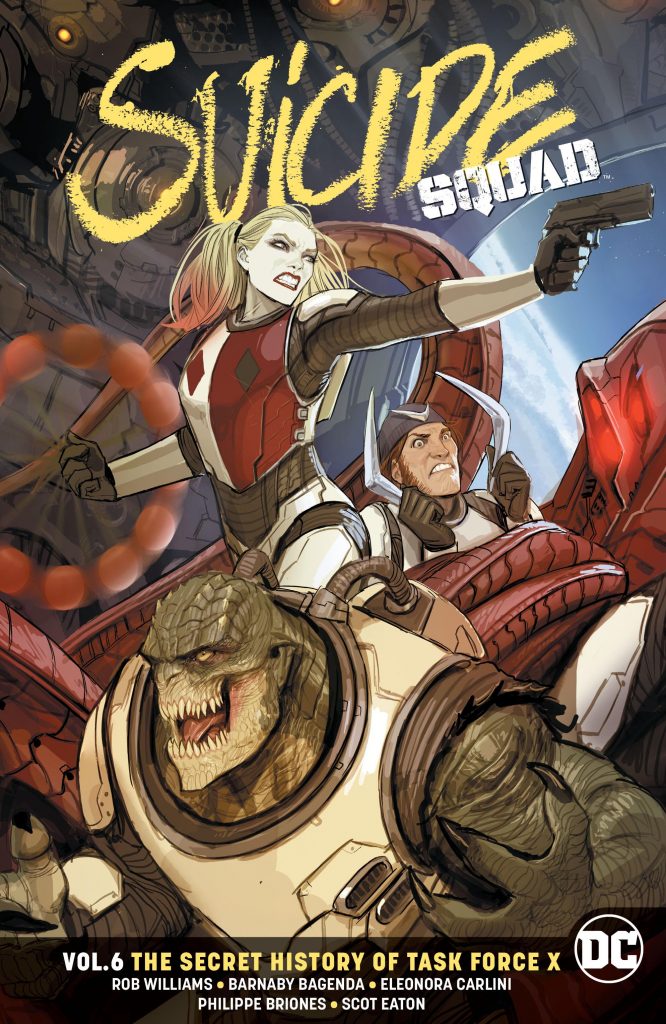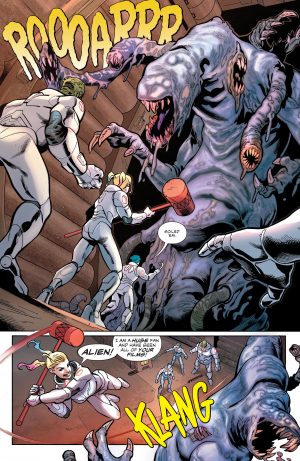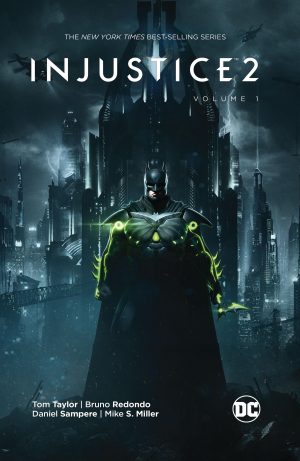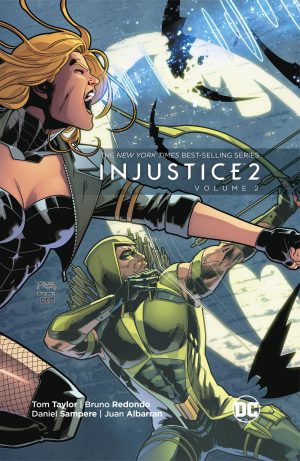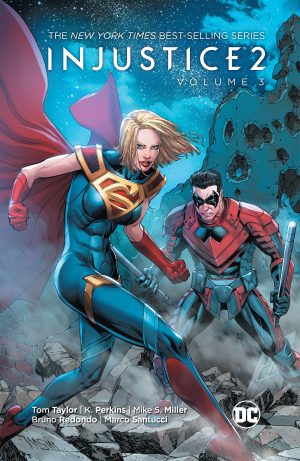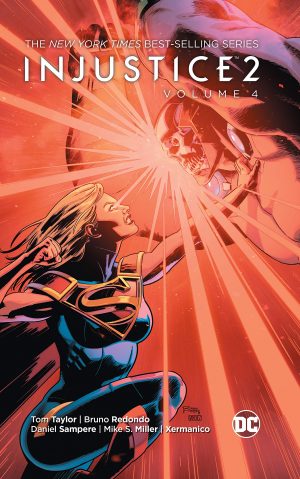Review by Ian Keogh
No longer under external control, it’s back to business as usual for Amanda Waller after the events of Kill Your Darlings. Or so she thinks. In fact the Suicide Squad’s past comes back to haunt them. As in earlier continuity, there have been previous versions of the Suicide Squad. Rob Williams is imaginative about this, and while the names might be known to long-term Suicide Squad followers, their new backstory isn’t.
The current Suicide Squad are largely criminals, forced to act in the public interest via the threat of implanted bombs in their head that can be detonated by Waller. The earlier versions were far more altruistic. They did the right thing because it was the right thing, and Williams contrasts the attitudes of patriots and cynics nicely as he builds toward what’s a planet-threatening menace. It’s cleverly done because Williams splits the team into two, one group heading into Area 51 on Earth, and the remainder sent to the moon, each discovering things that have remained hidden and concealed for decades. The twist lies in the contradictions, and the suspense about that is well sustained in a plot that uses the entire Suicide Squad, with Waller for once falling into the background.
Once again, it’s a full bill of contributing artists, but with the quality of Barnaby Bargenza handling most chapters. He has a style that looks deceptively loose, and a unique way of conveying viewpoints, but it looks fantastic, bar the occasional panel where enthusiasm runs away with him and he overcrowds it. Wilfredo Torres applies an appropriate retro cartoon style to short back-up strips dealing with government agent King Faraday in the 1950s, which tie nicely into the main story, and have a kick in the tail. Eleanora Carlini and Philippe Briones provide tighter pencils, and although their work can be differentiated from Bargenza, it’s still very good, while the final chapter by Scot Eaton is far more traditional superhero art.
The Secret History of Task Force X is a single story occupying all six chapters, but the way Williams continually escalates the threat ensures it never drags. The final chapters are neat as well, tying everything together and Williams presenting a, well, suicidal problem with no obvious solution. There must be, however, as there’s a volume seven, Drain the Swamp. Or maybe that has an all new cast.
